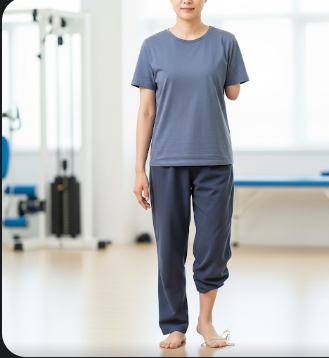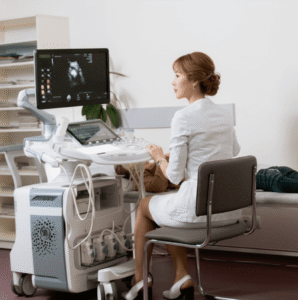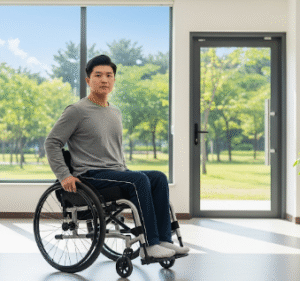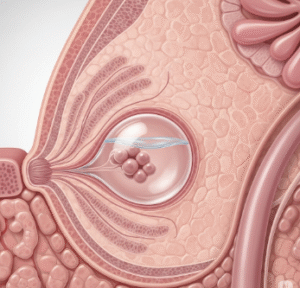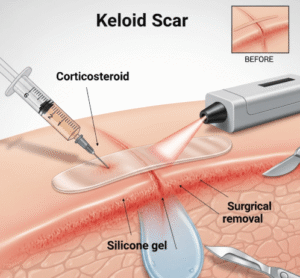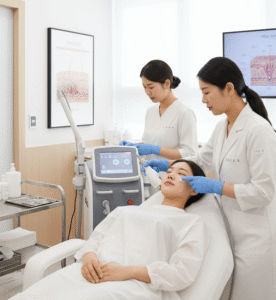Overview
Hemiplegia is a neurological condition characterized by complete paralysis on one side of the body, often affecting the arm, leg, and sometimes facial muscles. It is more severe than hemiparesis, where only partial weakness occurs. Hemiplegia can significantly impact mobility, daily activities, and overall independence.
The condition commonly results from stroke, traumatic brain injury, cerebral palsy, brain tumors, or neurological disorders. The severity and long-term outcome depend on the location and extent of the neurological damage.
South Korea offers advanced neurology centers, rehabilitation programs, and patient-centered care, which help individuals with hemiplegia maximize recovery and regain functional abilities.
Key Facts
🟢 ➤ Hemiplegia causes complete paralysis on one side of the body, including arm, leg, and sometimes face.
🟢 ➤ Common causes include stroke, traumatic brain injury, cerebral palsy, brain tumors, and neurological disorders.
🟢 ➤ Severity can range from temporary paralysis to permanent loss of motor function.
🟢 ➤ Early medical intervention and rehabilitation improve recovery outcomes.
🟢 ➤ Treatment often involves physical therapy, occupational therapy, speech therapy, medications, and assistive devices.
🟢 ➤ Advanced care in Korea includes robotic-assisted therapy, multidisciplinary rehabilitation, and state-of-the-art neuroimaging.
What is Hemiplegia?
Hemiplegia is a condition involving complete loss of voluntary movement on one side of the body, caused by damage to motor regions in the brain or spinal cord.
Key characteristics:
➤ Paralysis affects the upper limb, lower limb, and sometimes facial muscles on the same side.
➤ Can present as flaccid (loose muscles) or spastic (stiff muscles) depending on the underlying cause.
➤ Often accompanied by loss of coordination, reflex changes, and sensory disturbances.
➤ Commonly results from stroke or brain injury, though congenital conditions like cerebral palsy can also cause hemiplegia.
Hemiplegia differs from hemiparesis in that movement is completely lost rather than partially impaired.
Symptoms Related to Hemiplegia
Symptoms vary depending on the cause, location, and severity of the neurological injury:
🟢 ➤ Complete paralysis on one side of the body affecting arm, leg, and face.
🟢 ➤ Loss of coordination and balance, making walking difficult.
🟢 ➤ Muscle stiffness (spasticity) or flaccidity depending on type.
🟢 ➤ Facial droop or asymmetry on the affected side.
🟢 ➤ Impaired reflexes and difficulty performing daily tasks.
🟢 ➤ Fatigue and reduced endurance.
🟢 ➤ Sensory changes such as numbness, tingling, or altered sensation.
Causes / Possible Causes
Hemiplegia arises from damage to the motor regions of the brain or spinal cord, disrupting signals to muscles:
Stroke (Cerebrovascular Accident)
➤ Most common cause in adults.
➤ Can be ischemic (blood clot) or hemorrhagic (bleeding).
➤ Paralysis usually appears suddenly on one side of the body.
Traumatic Brain Injury (TBI)
➤ Damage to brain areas controlling movement may result in complete paralysis on one side.
Cerebral Palsy
➤ Neurological disorder caused by brain injury during development.
➤ Leads to congenital hemiplegia present from birth.
Brain Tumors
➤ Tumors pressing on motor regions may cause progressive paralysis on one side.
Multiple Sclerosis (MS)
➤ Demyelinating disease affecting the central nervous system, producing hemiplegia and other neurological deficits.
Other Causes
➤ Infections (e.g., encephalitis), vascular malformations, spinal cord injury, or neurodegenerative disorders.
When Should I See a Doctor?
Immediate medical evaluation is critical if hemiplegia appears suddenly or progressively:
🟢 ➤ Sudden paralysis on one side, especially with stroke symptoms like speech difficulty or facial droop.
🟢 ➤ Progressive loss of motor function without known cause.
🟢 ➤ Loss of coordination, balance, or fine motor control affecting daily activities.
🟢 ➤ Muscle stiffness, spasticity, or pain in affected limbs.
🟢 ➤ Suspected complications after head injury or neurological events.
Early intervention enables rapid diagnosis, acute treatment, and timely rehabilitation, improving long-term outcomes.
Care and Treatment
Management focuses on rehabilitation, symptom relief, and functional recovery:
Physical Therapy
➤ Exercises to restore muscle strength, improve mobility, and enhance balance.
➤ Gait training to regain walking ability and prevent falls.
➤ Stretching to reduce spasticity and prevent contractures.
Occupational Therapy
➤ Helps improve daily living activities, hand function, and fine motor skills.
➤ Adapts home and work environments for independence.
Speech and Swallowing Therapy
➤ For patients with facial weakness or communication difficulties.
➤ Focuses on speech, swallowing, and oral motor control.
Medications
➤ Muscle relaxants for spasticity.
➤ Pain management as needed.
➤ Medications for underlying conditions such as stroke or MS.
Assistive Devices
➤ Canes, walkers, braces, or orthotics to support mobility and stability.
Advanced Therapies
➤ Robotic-assisted rehabilitation, electrical stimulation, and virtual reality therapy.
➤ In Korea, cutting-edge rehabilitation centers integrate technology with multidisciplinary care.
Highlights (Clean Green Arrow Version)
🟢 ➤ Complete paralysis on one side of the body.
🟢 ➤ Common causes: stroke, TBI, cerebral palsy, brain tumors, MS.
🟢 ➤ Symptoms: impaired coordination, facial droop, fatigue, spasticity.
🟢 ➤ Early diagnosis and rehabilitation improve recovery outcomes.
🟢 ➤ Treatment: physical therapy, occupational therapy, speech therapy, medications, assistive devices.
🟢 ➤ Advanced care in Korea: robotic-assisted therapy and multidisciplinary rehabilitation.

